Japanese garden has its own style that makes it easily distinguished from other garden designs. The garden brings a sense of balance between plants, water, and rocks. The ambiance among them creates simplicity and serenity which “probably” made one feel relaxed or more relaxed and peaceful.
If you have decided to create or makeover your garden using this design, you don’t need to worry about the budget. Japanese style garden can be initiated, experimented, completed, tweaked, and maintained in inexpensive way. In fact, you probably only need to consider one of these next 10 Japanese garden ideas for backyard before having a go with your own.
As always, our next list is compiled for you by Simphome and without further ado let’s start the count down
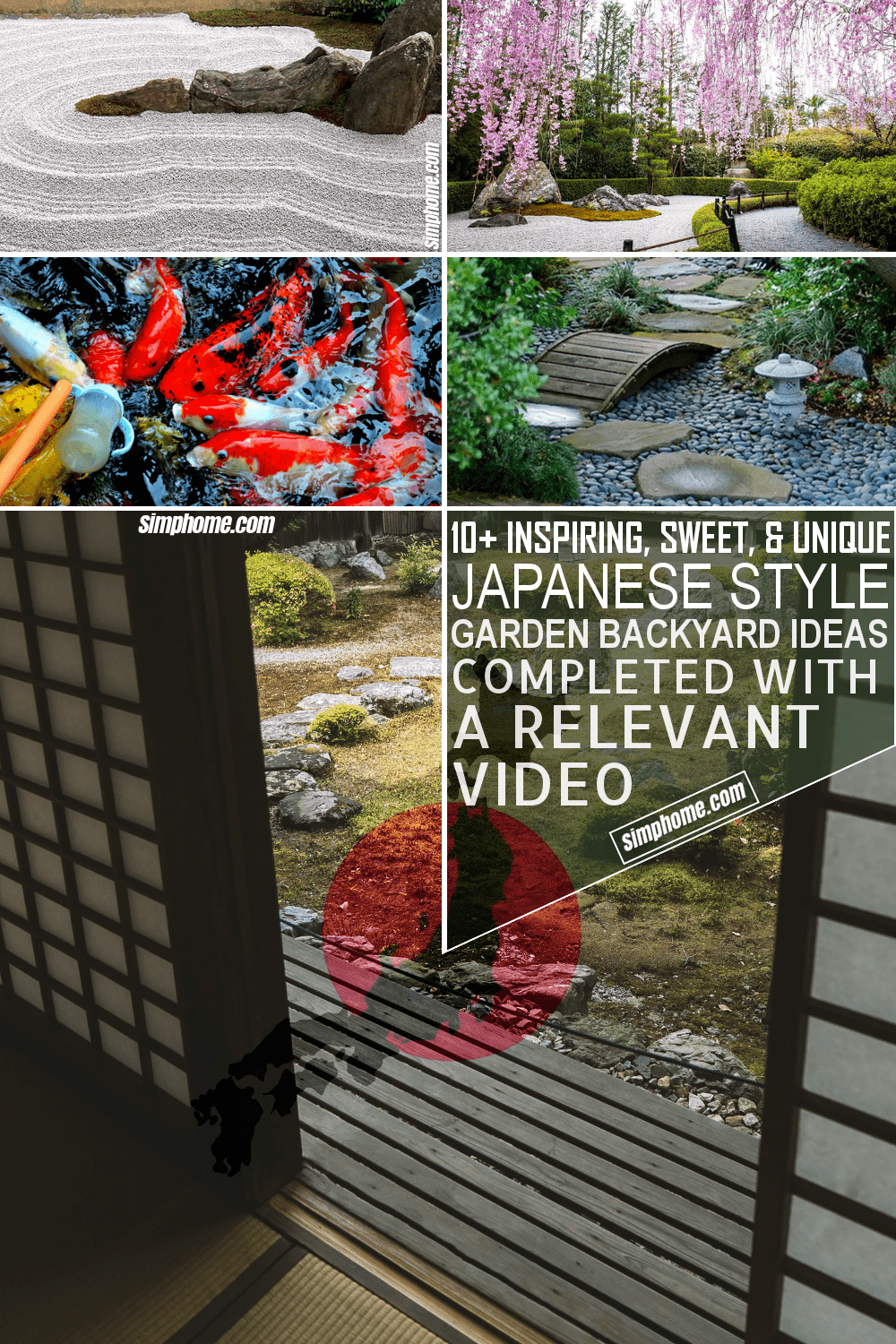
10 Japanese Garden Style Ideas for Your Backyard
However, before that, I have to tell you that you can also start the countdown by pressing the playing button of the following video. FYI, it contains professional voice-over productions, the editing process, and rendering that I assume “contribute” turning the video worth talking and sharing. Well, I hope I am not too confident with my claim. BTW, I hope you enjoy this video
The Japanese Garden is an excellent example of how the right choice of plants and a little creativity can turn your garden into a tranquil space that you’ll be able to enjoy every day. The key is to add some flair and inspiration from the outside world.
We have compiled 10 Japanese Garden style ideas for your Backyard, which will help inspire you and give you some ideas on making over the garden. However, before that, here we are presenting you relevant concerns that you probably need to know before taking an idea featured in the list.
What are the plants to use
Answer: The Japanese Garden style is often associated with ponds and streams that you can surround with gravel, river stones, boulders, or even stone flags. The plants in a Japanese-style garden are typically evergreen trees, such as Tsuga (cedar), Zelkova, and Japanese cypress. Other plants to include in your design would be a handful of bamboo, irises, and magnolias.
Different plants and trees in the Japanese Garden are highlighted for various purposes, such as to provide color, privacy, interest, and flowers. Be mindful of the aspects that you would want accentuating.
Additional materials such as stones, gravel, stepping stones, split logs, and other retaining wall materials are also important in the Japanese-style Garden or Backyard.
Which kind of plants is suitable for a Japanese Garden?
Answer: For a Japanese Garden, you can use any herbaceous plants such as primrose, poppies, pansies, snowdrops, forget-me-nots, or narcissus varieties. Also, for a Japanese garden is possible to use non-fussy grasses such as baby blue eyes or cornflower varieties.
What is the focal point?
Answer: The focal point of a Japanese Garden is usually the water element. It can be either from a small pond or from a stream running through bamboos. You should not be placed at the center of your garden.
It is recommended to use a stone for the main element where the water from the planter will fall and flow on. Preplanter stones that fit each other in a variety of sizes work well. You should also have pre-installed planters to accommodate your smaller pots of flowers. Other materials such as seaweed or wood mulch will make your space look more natural and unique, in addition to adding warmth to the environment.
What type of step to use? How many steps?
Using steps is a great idea for the Japanese garden style because they add great character and interest. However, make sure to think about how many steps you will have. No matter how small your garden is, a single step just won’t do.
Three to five stepping stones or stones will generally work well. Four steps are considered the ideal amount for the garden style. A Japanese Garden located near a stream or pond is apt to have more steps than other yard areas.
What materials should be used?
Answer: When acquiring materials for your Japanese-style Garden, you must look for ones that fit your space and budget as well as their use in Japanese gardens and yards.
Materials required to start and finish the Japanese Garden or Backyard are :
- No 1. Gravel or pea gravels. These are usually used in small amounts to give a natural feel to the garden and its overall environment.
- No 2. Wood mulch to make the yard look natural and warm.
- No 3. Rocks of various shapes and sizes are also part of the list. They can be used for retaining walls, large stepping stones, and even for the water feature areas within your Japanese Garden or Backyard. First, you should research which rocks will work best for your garden since some stones simply won’t look good in certain places in the Backyard or yard. Rotating your stepping stones now and then will keep your Backyard interesting, especially if you have a limited number of them.
- No 4. Additional materials include plain and gravel stones, pebbles, bamboo, shrubbery, and others.
- No 5. Adding a small wooden bridge over the stream is also a good idea to make the garden look more like a traditional Japanese garden.
- No 6. Lighting can be added that will accentuate some of your favorite plants in the Garden or Backyard. Incandescent bulbs in varying forms can be used, but if you prefer to have some lights that add warmth to your Backyard or space, then adding low voltage lighting may be the way to go.
- No 7. You will also need a piece of stone or another material to use as the base for your water feature.
- No 8. You should also provide pots, planters, and containers with gravel and small rocks in them to your Japanese Garden or Backyard.
- No 9. If you are ready for a more natural look, stones, wood mulch, rocks, and pebbles are needed. If you want to have a more modern look at the garden, then pre-manufactured logs can be used and light sconce lighting accents that can also bring some color to your garden or yard.
- No 10. Finally, you will also need to secure the garden or yard in some way so that no one can enter it. You could complete the task by using chain link fencing that is strong and sturdy enough to keep kids, pets, and animals out of the area.
How big should it be?
Answer: The size of your Japanese Garden is a very important consideration. It should not be too large or too small for your space. Typically, a Japanese Garden will have a small waterfall and pond with basic wooden planter boxes. They would be connected by stepping stones. If you have more space to work with, try adding koi fish to your garden! Koi fish are popular additions to a backyard pond in Japan. These colorful carp can be found in various sizes and colors, such as white with red markings, yellow with black markings, or orange with black markings on the skin.
Is it more difficult to create a Japanese garden style in a backyard?
Answer: Yes, it is more difficult to create a Japanese garden style in a backyard. However, the Japanese Garden is an attractive addition to your Backyard, and you will be able to enjoy it for years to come. Japanese gardens are suitable for almost every yard or environment and can also be done in small or large gardens. Start with small, simple houses in your garden, and they will slowly extend out into larger landscapes by adding trees, rocks, stepping stones, plants, and water while creating a breathtaking view through the trees onto your entire yard.
For more detail, pay attention to next instructions:
Step 1: Preparation
1.1:Digging and preparing the space.
To do it properly, you should first prepare the space correctly:
- Remove small trees and shrubs
- Keep the Garden clean and weed-free
- The Garden should have a good slope in a south or southwest direction to ensure proper drainage.
1.2: Preparing the soil.
The soil for your Japanese Garden should be light, lightweight, well-drained, and have a good texture to allow for good drainage; if you have clay loam soil, make it loose with sand or peat. Add organic matter if necessary to enrich your Japanese Garden Soil.
1.3: The Water Feature
A water feature such as a pond is an important part of any Japanese Garden that will add interest and beauty to your Backyard or yard area. To build the water feature, you should first outline the area where you would like the water feature to be and then dig a large enough hole to fit in a pre-manufactured pond or small pool. You should use a gentle slope so that the water will flow down from one end of the yard or garden and add a few rocks and stones for additional interest in your Japanese Garden.
1.4: Preparing the stepping stones
Stepping stones are an important part of any Japanese Garden. Traditionally, they are made from stone that is naturally found around your property to integrate with your landscape and give your garden its natural feel.
1.5: Planting the stepping stones
The stepping stones are placed, and then plants are made into wooden or stone boxes to create a natural oasis. You can then place stone, plant, and gravel in the boxes to make the stepping stones.
1.6: Planting of springtime shrubs
To do it, in short, you should first dig a hole and plant hardy shrubs at the end of the stepping stone.
1.7: Planting of trees
To plant the tree, you should first dig a hole then make the hole bigger by filling it with compost or other organic matter. You can plant the tree in the hole you just dug in any direction of your choice.
Plant in that spot, then make another hole and plant another tree if needed or desired.
1.8: Planting springtime bushes
To do it, you should first dig two holes that are twice smaller than your garden so that they will be comfortable for your companion plants to grow in them once planted. Place plants in these holes and then cover them with soil to get enough water after planting.
1.9: Planting a small tree
To do it, you should first dig a hole that is twice smaller than your garden so that it will be comfortable for your companion plants to grow in it once planted. Place plants in these holes and then cover them with soil to get enough water after planting.
1.10: The Final Touches
To finish the Japanese garden, you should fill in your garden with gravel and stones around the base of trees. This idea will attract moisture to the base of the tree’s roots. You can also add plants, decorations, and other elements to your yard and garden area that will give it a unique appearance.
Step 2: Creating a small stream to flow through your Japanese Garden.
Instruction: Clean the gravel into small piles and begin mixing them with water; one part of gravel to three parts water will make one part. Once you have done this, take a shovel or trowel and add water to the mixture until it reaches a thin stream of about 20 centimeters. Then use your palm to form a spiral shape in the stream by smacking the palm over the gravel and move it quickly from left to right. This action will leave your stream with constant ridges for many years.
Step 3: Adding rocks to give your stream a natural look, decor, and feel.
Instruction: Dig a hole near where you plan on placing your stepping stones and plant two trees in it that are free from disease or pests. Then add some rocks in the hole for the leaves to hangover. Also, be sure to create a small stone enclosure or small fence where your walking paths will lead you.
How to Constructing your stepping stones?
Instruction: Choose your materials first and measure the size of the step you would like them to be.
Make sure it is around one meter long and two meters wide. Make sure that they are sturdy and strong to handle large people during their walks across them. You should only use natural stones that you found on your property because they will improve the look of any garden or yard.
Step 4: Adding some plants and trees of your choice.
Instruction: You should look for the best plants and trees that fit perfectly into your landscape. The following bushes are good to use, but they will only work if you have space in your garden.
– Arborvitae or evergreen: Use this plant if you have an area with little sunlight or no sunlight at all during the day. It is a deciduous tree that produces berries, used as food for animals; it also produces small birds’ nests. You can find them in most nurseries, but make sure to only buy disease-free ones and cuttings from a reliable stock source.
– Azalea: This small flowering shrub can only grow to a maximum of 2 m high and the same wide. They will produce about pink or white flowers during spring, making them great for any garden.
– Japanese Maples: This plant is a small tree that grows from a cutting that you take from another tree. It can take up to ten years for the tree to be ready to harvest seeds or pollen, but it’s worth it when you see the large red leaves in the fall and bark that fissures naturally into patterns.
The Japanese Maple is a larger tree that grows from cuttings and, once it reaches 5 meters in height, it will produce many large, purple flowers at the top of the branches.
– White Flowering Dogwood: This is another flowering shrub with white flowers that spread a sweet smell over your yard or garden once they bloom during spring. They are easy to grow and thrive in polluted areas.
– Hollyhock is another flowering shrub used for its edible leaves and flowers that produce small white flowers during spring. This flowering plant can only grow to a maximum of 2 meters tall, but when they reach that height, they also have deep root systems, which are great because they will help them out of muddy patches and stay healthy no matter how much the ground shakes.
– Japanese Cherry Blossom: The Japanese Cherry Blossom is one of the best flowering species globally and can only be found in Japan. It has a beautiful pink flower that blossoms numerous flowers along a stalk, filled with sweet nectar.
– Golden Rhododendron: The Golden Rhododendron is a fast-growing evergreen shrub with white flowers that bloom in the fall. It is a smaller flowering plant that can only grow up to a height of 4 meters, but it will blossom numerous flowers over a long period in the fall. This idea makes it great because they are covered with nitrogen, so they will not die after the first few years but can produce more blooms each year.
– Japanese Mountain Laurel: The Japanese Mountain Laurel is one of the best flowering plants because it has many flowers on top of tall stems, and these flowers are all filled with nectar, making them perfect for bees.
– Japanese Pine: The Japanese Pine is a perfect tree for your yard to decorate because it will grow quickly and produce large branches that are filled with large conical leaves. These leaves have small edible seeds on the edges, which are great for any bird to eat.
– Purple Leaf Plum: The Purple Leaf Plum is a flowering plant that produces purple, plum-shaped flowers in the summer. It grows rapidly from cuttings, so there will be many more plants of flowers in your yard or Garden within two years.
– Maple: The Maple is a flowering tree that can only grow up to 5 meters tall, but it is very common in North America and can be found by most nurseries. It produces red, sweet-smelling flowers.
– Evergreen Oak: The Evergreen Oak is a deciduous tree that only grows to heights of 5 meters, but when it reaches that height, it will also produce many small green leaves at the bottom of each branch. When they begin to fall off, You can use them for any other type of natural decoration or landscaping because they are light and sturdy.
Step 5: Placing stones along your stream.
Stones that you can select such as :
- White Granite, Brown Granite, Black Granite, and Black Vermont Marble
Instruction: Place the stones in the designated locations over your stream. The best way to do this is to use cement or mortar because it will help them last longer but remember to only use 3-4 stones per area. You should place a layer of stones at the base of each path to be solid for your walking path to be on. - Ashlar Cut Granite
Detail: This is a type of granite that has been cut irregularly. You can only find it in quarries or if it is imported. - Limestone (Plaster)
Detail and Instruction: This is one of the easiest stones to work with because it only requires cold water and elbow grease. This type of stone has many small bumps on it, and it is very light, making it perfect for use for paths because they are not as heavy as granite or slate stones. You will need to use a lot of concrete and cement when stacking them to make them last longer. - Sawn Rock
Instruction: Select a type of stone that is easy to handsaw into smaller pieces such as crushed stone, gritstone, or limestone. To improve the yard’s look, you will only need a few pieces at a time, so pick things up and place them in your designated areas. - Chestnut Stone
Instruction: This type of hardwood is used to make furniture and also for making small decorative bookshelves. To see which variety of wood is right for your project, try looking at the bark on it before deciding on using it. It will help you decide on how thick to cut it into so that it will last longer. - Portrush Stone
Instruction: Some of the best-looking stones come from the city of Derry, Ireland. These are specially shaped to look good in your yard, and you can even have them engraved with your name or initials. - Slate
Instruction: This is a type of stone used in roofs because it has a strong natural layer that absorbs water, which helps it last longer. - Stone Hinge
Instruction: Select a type of stone that will look good in your yard and can also be opened and closed easily. Try to get the ones that are made from smooth materials such as marble or granite. Some types may have an actual metal hinge which you can either get away with or replace with real stone. - Rock Paving
Instruction: Stone paving is made of small, flat pieces of rock that can be used to make a decorative pathway in your yard. It is best to use the natural rocks that are found in your area instead of buying them because they may not look as good. - Fieldstone (Quarry)
Instruction: This stone makes a good pathway because it is hard and smooth, making it easy for shoes to walk on. It also looks great with any other type of stone decoration. - Granite (Smooth)
Instruction: This is one type of granite that is very common and can be seen worldwide. You can polish it into a nice smooth finish that feels good on bare feet. - Marble (Pink)
Instruction: Pink marble is the most common type of marble. It is easy to work with and takes paint well so you can add your creativity to your yard.
Step 6: Design your yard further with borders
To do it properly, you can do it with the help of a garden designer or by yourself. Start from the corner where there are no structures, and proceed with planting the species of hardy plants that you have planned. Try to keep the same theme in plants to avoid looking messy.
Step 7: Maintain, manage, and makeover your new Japanese garden
A properly built Japanese garden requires less maintenance compared to a Western-style garden. The only thing you have to do is keep it clean by cutting fallen leaves in autumn and raking up leaves and other things like pine needles during the winter season. You will also need to replace a dead plant with a new one now and then.
Step 8: Taking your walkway from the stream to a clearing in your yard.
To do it properly, use narrow planters for bamboo and other plants that have a thick stem. You should properly trim the rest of the area to give contours like a drop-shaped or geometric design.
Step 9: Getting rid of the unwanted plants in your garden and making room for your new plantings.
Instructions:
- This is only necessary if you have some unwanted plants in your garden.
- If you have decided to keep unwanted plants, you can use a sharpened shovel or an ax to divide them into smaller pieces before removing them.
- To transplant: Dig out a hole at least the size of its roots and add compost and other useful materials as needed. Plant the plant in the hole, backfill with soil and pack lightly to eliminate air pockets.
Step 10: Lighting up your Japanese Garden or backyard.
The most ideal to do it is to use hanging Japanese lanterns that you can put on the trees or use standing lamps. You can also add soft lighting to your garden by adding dimmer switches to each lamp.
Step 11: The final touch: adding stones and sand.
Instructions: To add sand, first get rid of all unnecessary plants and then work with a garden rake to create a level surface of the soil and pebbles as needed.
To add stones, start from the water’s edge moving towards the back of your garden. Continue with it till you reach another water’s edge (in case you have one) or until you reach your back fence (in case you don’t have one). If you are using bigger rocks than your feet, do not forget to trim them into round or square-like shapes before adding them.
- Adding water plants.
Instructions: You can add aquatic plants and flowers that don’t have roots in the soil and grow in the water instead. - To plant: Dig a hole for each plant about 1 inch larger around than the root ball and deep enough for its root ball. Fill soil around the root ball, press down to lightly pack soil, and settle the plant in place. Add some more soil if needed to bring it up to ground level. Water deeply after planting.
What types of shrubbery can be used in a Japanese garden or Backyard?
Answer: There are many species of shrubs that you can use for your Japanese Garden or Backyard. They include heathers, hollies, boxwood, maple trees (sugar maple), and Japanese maples (Acer palmatum). There are also a few native shrubs that you can add to your garden as well.
What should I do if my Backyard is not big enough for a Japanese garden style?
Answer: You may split your Japanese Garden into two or create a smaller Japanese garden in the corner of the garden. You don’t always need to have a large Japanese Garden for your Backyard.
What kinds of flowers would you include in a Japanese garden or Backyard?
Answer: Many flowers can be used to decorate your gardens, such as single white Cosmos (Cosmos bipinnatus), camellia, azalea and wisteria vines, hibiscus, deutzia, and sweet pea. You can also add annual flowers such as snapdragon, daffodil, zinnia, and peonies.
How can I make my Backyard look like a Japanese garden without spending too much money and time on it?
Answer: You can try to use some of the basic ideas used in the Japanese style garden to make your Backyard look similar:
- Keep moss or lichen on your plants (considered bad luck by many Japanese).
- Use bare soil or gravel (decorative) in your garden.
- Remove all stones, lumber, and other construction materials from your garden area.
- Make sure that you place some kind of a statue or object near one end of your garden.
- Garden with a pond or water feature if you have enough space for it (you can change the water level with a pump or small vegetable-pumping hose).
- Try to use some of the basic ideas used in the Japanese-style garden to make your Backyard look similar.
How to do it?
- Step 1: Find out where your house’s north-point is (for example, using a compass).
- Step 2: Measure the distance from your house to the point where you want to create a garden.
- Step 3: Walk in that direction and place objects at regular intervals. For example, a Japanese stone lantern is placed every six steps.
- Step 4: Use natural materials such as bamboo or rocks in your garden design.
- Step 5: Make sure that whatever you plant or grow does not block your view or window area of the house.
- Step 6: Useful Plant plants that can be harvested (like bamboo for its long stalks of wheat for its seeds).
- Step 7: Choose a place in your garden where you can build a pond with the help of rocks.
- Step 8: If you have water, use it to create fish ponds or waterfalls. This trick will make your Backyard look more like a Japanese garden.
Is it possible to create a full-scale Japanese garden without hiring experts?
Answer: Yes, you can build a full-scale Japanese garden without hiring experts if you have enough time and creativity to do this. You may try to do this by using some of the basic ideas and instructions mentioned above.
Is there any difference between Japanese gardens and French-style gardens?
Answer: Yes, there is a great difference between these two garden styles. While the Japanese Garden represents serenity, the French Garden has been created to provide enjoyment and fun. So, you can say that the Japanese Garden provides peace of mind while French Garden offers excitement.
How can I make my Backyard look like a Japanese garden without spending too much money and time on it?
Instructions:
- No 1. Keep moss or lichen on your plants (considered bad luck by many Japanese).
You can keep some of the moss or lichen attached to the trunk of trees. This idea will have a natural effect on your garden. If you don’t have any moss or lichen, plant some species related to moss and lichens (for example, pines). - No 2. Use bare soil or gravel (decorative) in your garden.
Japanese consider gravel or bare soil (satoyama) the best way to create a Shizen (natural) style in their garden. To make your Backyard look like a Japanese garden, remove all stones and lumber from your garden area. - No 3. Remove all stones, lumber, and other construction materials from your garden area.
- No 4. Make sure that you place some kind of a statue or object near one end of your garden.
Japanese consider statues or objects as good luck for their gardens; they believe these objects symbolize what makes the garden unique. You can place small statues, symbols, or anything in the middle of your Japanese Garden to make it unique. - No 5. Garden with a pond or water feature if you have enough space for it (you can change the water level with a pump or small vegetable-pumping hose).
Japanese gardens have ponds because this symbolizes the concept of meditation and tranquility (serenity). - No 6. Do not plant hardwood trees.
Japanese gardens do not have any mature trees because they consider them as bad luck for their gardens. If you have some mature wood trees, then trim them to keep the branches low and smooth. - No 7. Use layers of reeds (rush) in your garden.
Reeds are used in Japanese gardens because they symbolize the spirits of ancestors passing on to future generations. The reeds are also good for keeping your Garden cool during the summertime. - No 8 No weeds allowed (only one type of plant per area).
The reason is that weeds are from the outside world, and you want to make your Backyard a pure Japanese place. It is very important to control weeds in your garden because they will destroy your carefully created Japanese look. - No 9. Drainage troughs (shiozumi) are used in Japanese gardens.
Drainage troughs are used in Japan to drain water from decorative fish ponds and small ornamental ponds where it is not possible to use pumps or hoses for irrigation purposes. - No 10. By ōbu screens are often used to create a formal outdoor space.
Byōbu screens are often used in Japanese gardens because they make the garden look more formal and traditional.
What is the difference between Japanese and Chinese gardens?
Answer: Chinese gardens are grown on flat areas, while the Japanese Garden is created on hillsides. There are no paths through the garden; you can say that these gardens are “walk-around” designs. This fact also means that visitors walk from one area to another without moving through any of them.
Can I replicate the same style of garden in all seasons?
Answer: Yes; You can create a Japanese garden all through the year. However, it is best to do it in the spring and fall seasons because most people have time to sit back and relax.
What are different features found in a Japanese style of garden?
Answer: Not only are the traditional design elements of this type of gardens such as rocks, stones, water, mosses, bamboo, and other natural materials, but these gardens also include a variety of seasonal plants and trees that will offer your Backyard its unique beauty throughout all four seasons.
How do you maintain a Japanese garden, so it does not lose its beauty?
Instruction:
- No 1. Always keep your garden clean and free from harsh chemicals or any other chemicals that may destroy the natural look of your garden.
- No 2. Fertilize soil twice a year with fertilizers (which can be obtained at your local gardening store).
- No 3. Buy plants from reputable dealers (not the same as what you get in a regular hardware store) and replace them every three to four years.
- No 4. Watch over the water level in your garden and remove any excess water from your garden area.
- No 5. To improve the appearance of a Japanese-style garden, all you need to do is add mosses and rocks to your yard (mixed with gravel or natural soil).
- No 6. Do not plant any bushes or trees in your Japanese-style garden for at least ten years (this is a safety factor).
- No 7. Decorate with the most beautiful stones, pebbles, and rocks you can find to make your garden look like a Japanese one. Make sure that these decorative stones are natural because artificial stones are not good for this type of design.
- No 8. Always add small ponds, fishponds, and water features to your garden (if you have enough land).
- No 9. Place a good amount of stones around your garden and above it (this will help control weeds and keep your garden looking tidy).
- No 10 Only grow a mixture of traditional plants in your Japanese-style Garden.
- No 11 Maintain the original shape of all the stones (by cleaning them with water in between every year).
- No 12. Properly maintain the balance of water, rocks, and structured areas by never allowing it to be too wet and always dropping excess water.
- No 13. Make sure that you do not plant any hardwood trees in your garden for at least five years so the plants can take root properly.
- No 14. Keep your garden free from dead plants and deadwood (use masonry pebbles to raise the height of the soil).
- No 15. Do not use any chemicals or harsh chemicals in your garden.
Well, there are more than fifteen tips that you can follow to ensure that your Japanese-style garden will last for many years. - No 16. To properly maintain your Japanese-style Garden, you have to add extra pebbles and rocks to the top of it and below it as well.
You have to add these extra elements because they will keep weeds away from your garden while keeping the soil off the decorative stones on its surface (which is very important). - No 17. Care to see if your garden is ready for planting after the first six months.
It does not take long for your garden to develop its unique look, and you will find that the Japanese style looks better with some time (it is a matter of about a year or so). - No 18. Roll down the stone walls of your garden.
Use this measure to keep your yard looking neat by removing any dead plants and shrubs that may be in there.
What is the difference between a traditional and modern Japanese garden?
Answer: The main difference between these two types of gardens is the shape. The traditional Japanese garden has a complex shape, while the modern Japanese Garden tends to be more box-type.
What are the differences between a Japanese and a Chinese garden?
Answer: There is not much difference between these two types of designs, but it is clear that the Japanese Garden tends to be smaller than Chinese designs. Other things that set them apart from each other are the ponds and rocks that are found in Japanese designs.
Does a Japanese garden need sunlight?
Answer: No; Japanese gardens are shaded spaces where visitors can come in close contact with nature and enjoy its beauty all day long regardless of whether it is sunny or cloudy outside.
Summary:
Plants to use for Japanese-style Garden: For those who want to create or makeover their Backyard with some sort of Zen effect, there are three plants that you may want to use. In Japan, these plants represent simplicity, naturalness, tranquility, and harmony with nature. They also symbolize Shintoism religion.
Fighting pests and diseases in the Japanese Garden: There are many ways that you can prevent and stop pests and diseases from attacking your garden. One of the most common ways is by placing orange peel or pieces of citrus around the garden (this will repel aphids). Another natural way to fight off insects is by using diatomaceous earth. This powder looks like dust but is actually made up of small fossils that can penetrate an insect’s exoskeleton, causing them to dehydrate.
LIST ENTRIES:
These entries are compiled from different resources that you could locate on a reference section under point number 1. Start with 1 link and I hope it would lead you to an awesome blog or a website that you’d subscribe to and share with anyone close to you on social media.
- 10 Small Garden Styling Ideas
- 10 Small Patio Garden Ideas
- 10 Minimalist Backyard and Garden Ideas
- 10 Kitchen and Herb Garden Ideas
- 10 Indoor Floating Garden Ideas
- 10 Interior Garden Ideas for Small House Owner
- 10 Country and Cottage Garden Decor Ideas
- 10 Small Indoor Garden Ideas
- 10 Indoor Succulent Garden Ideas
- 40+ DIY Flower Garden, Planter, and Container Ideas
10. A Small Japanese-Inspired Backyard Project Idea
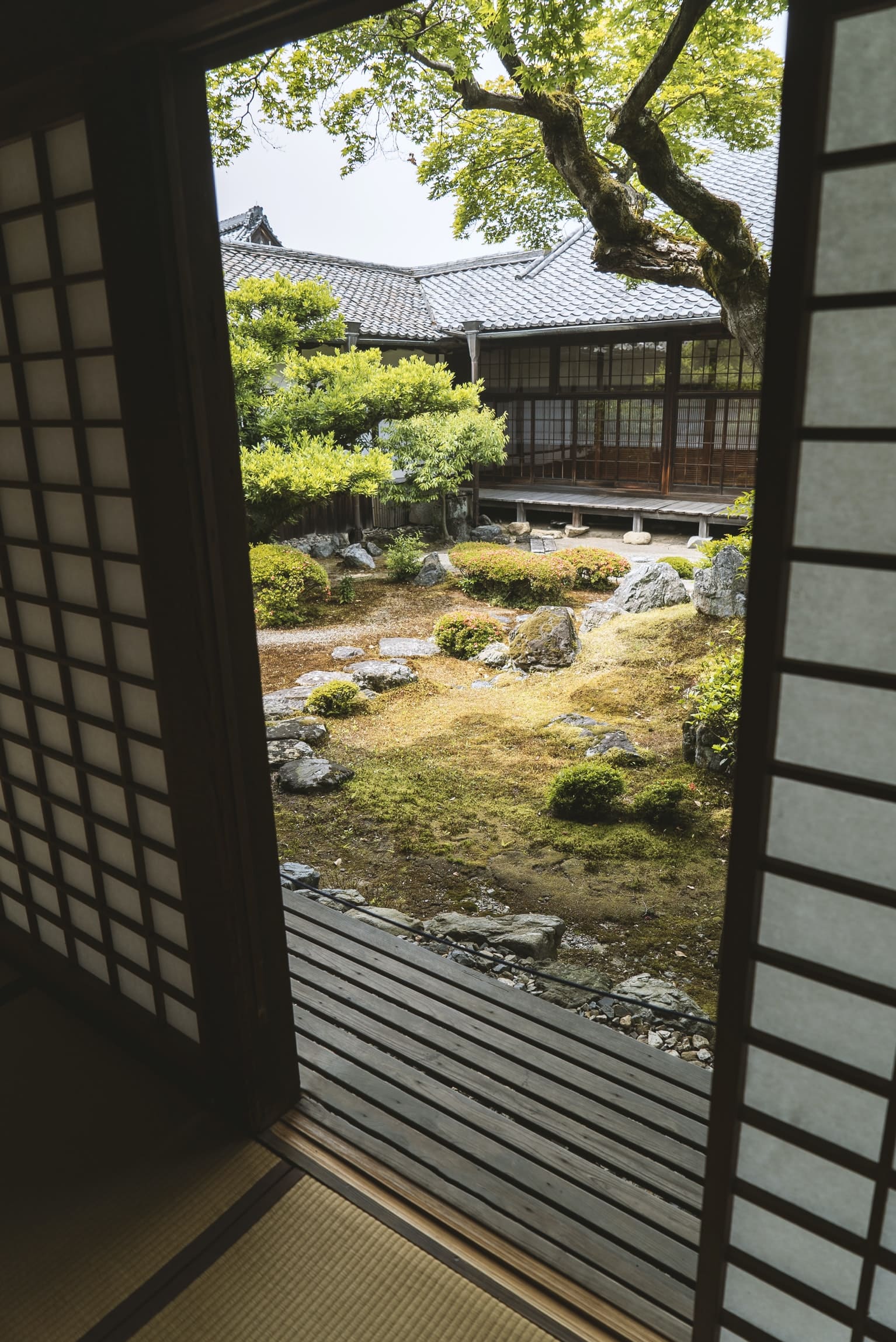
Plants, water, and rocks are the essential elements in a Japanese garden. Most garden design is based on natural set. So, the garden creates a natural feeling when looked at.
You only need few kinds of plants for a Japanese garden. The idea is to make the garden as simple as possible. For instance, one or two kinds of shrubs, moss, and some taller plants are enough for the garden.
Typically, a Japanese garden has a pond in it. But it is a bit tricky for a small-spaced one. Therefore, gravel can substitute the water element. All you need to do next is spreading it along the center around stepping stones to make a pathway. To personalize it, different-sized rocks can be used as garden edging.
To give a more Japanese feeling to your garden, you can use a bamboo fence as an accent that adds an ornamental effect to it. The key to the idea is to arrange the garden elements as sparse and simple as possible. The simplicity will allow you to contemplate calmly while walking through it.
9. A Cheap Japanese Style Garden Project Idea
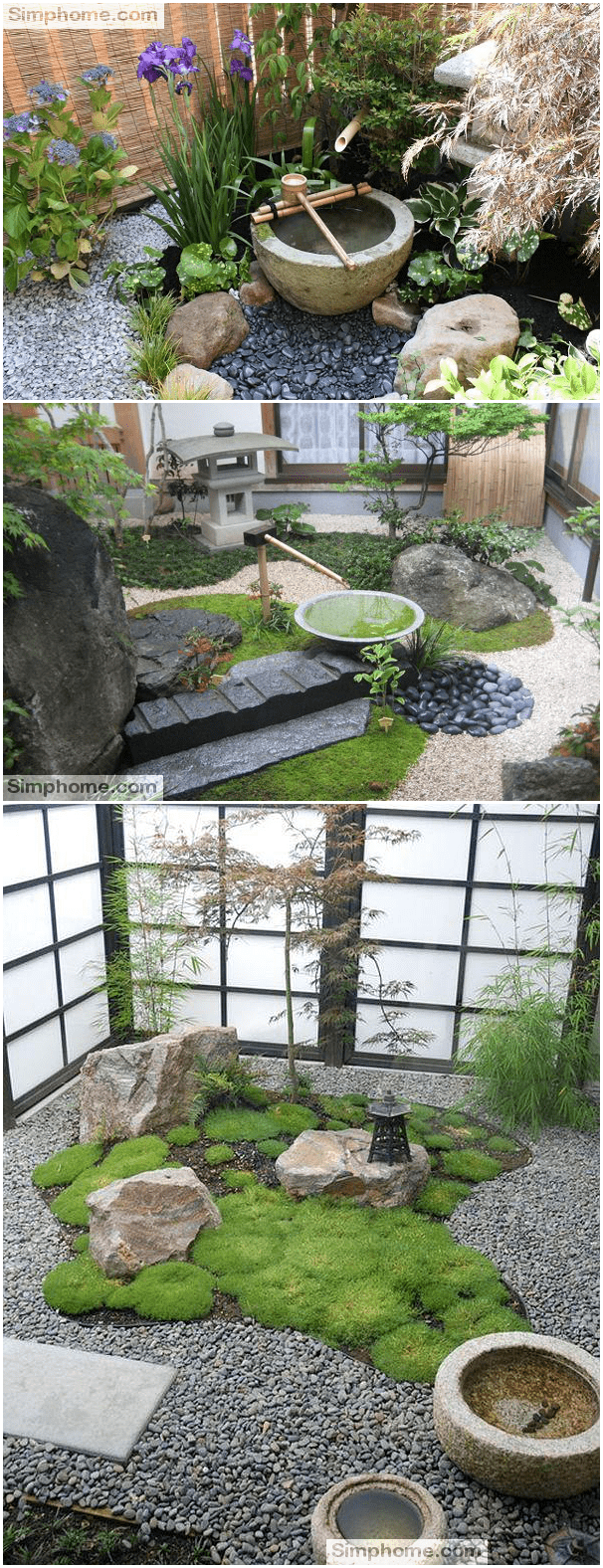
You can turn your limited backyard space into a serene Japanese garden-style asset. It doesn’t have to be expensive, though. First, collect rocks from the surrounding area to cover the soil. Using gravel or pebbles in place of grass to keep your budget low and maintenance to a minimum.
Since the garden project is intended for a small area, moss and a small leavy plant would be needed. Next, you should get shoji screens or shrubs include two stone basins to decor the corner of the garden to mimic a pond and to round out the garden.
8. Plants for a Japanese Garden Idea
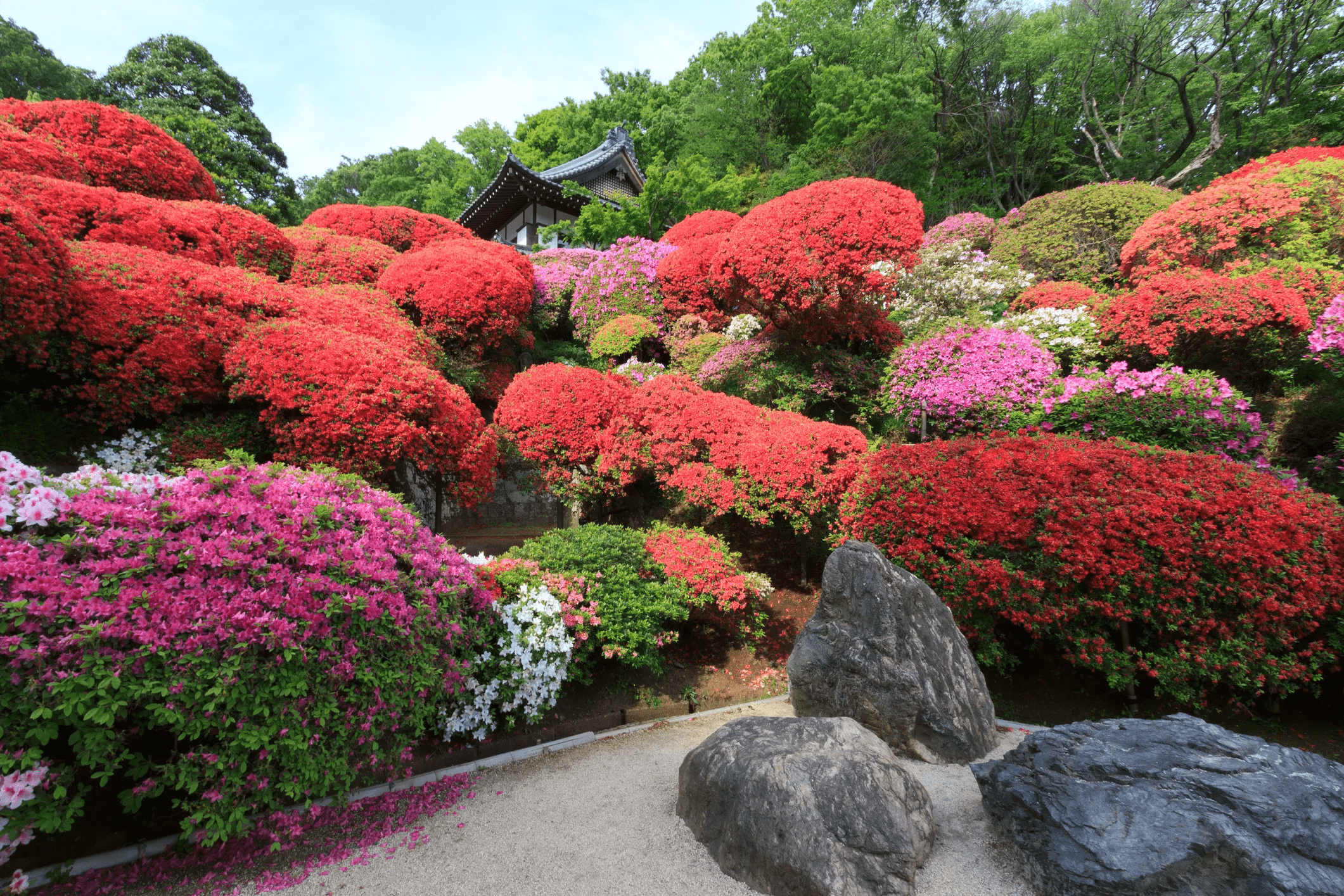
Plants play an essential role in carving out your Japanese garden style. One of which is azalea which is easy to shape and has various colors, such as red, pink, yellow, and white.
Another most common plant found in a Japanese garden is bamboo which can also be used as a privacy fence for your garden. Camellia will also accentuate the style with its large lushly flower and glossy leaves. However, the most prominent plant of all is cherry blossoms.
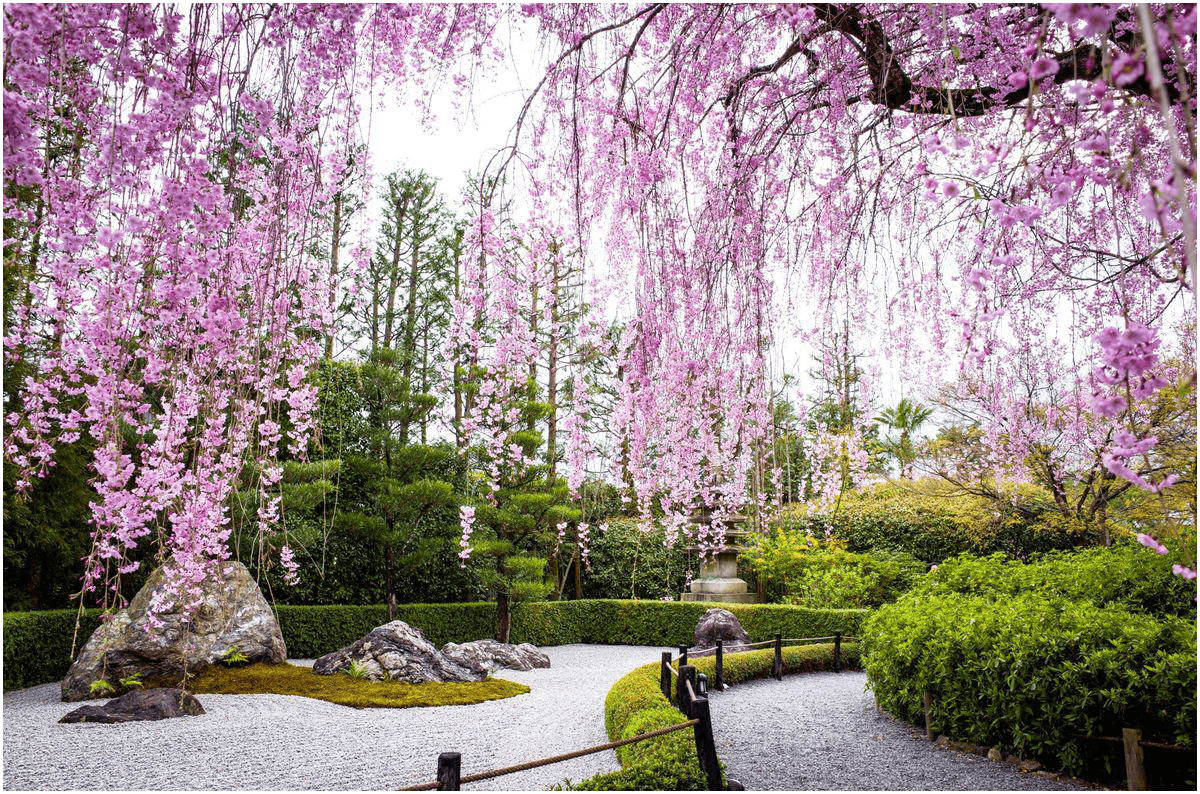
Japan is often synonymous with cherry blossoms. Therefore, planting a cherry tree will add significant nuance to your garden. A cherry tree can adapt to many types of soil so I think it would not give you much trouble. Plus, it can also adapt to multiple exposures of sunlight – full, partial, or shady. However, it needs moderate to extensive watering care and pruning. Therefore, you need to plant it near water access.
Basic knowledge of how to prune a tree
Instructions: 1. Cut off any branches growing into the center of the tree – these are called “water sprouts” and can damage the core of the tree.
2. Cut back long and droopy branches to the desired length (after pruning, a branch looks like a tapered candle).
3. If you want the branch of your tree to be smaller in diameter, remove some wood from the inside of the branch; you can use a saw or using a chisel.
4. If you want the branch to grow faster, remove leaves on that particular branch or cut it off altogether (this is done for about 2-3 weeks).
5. Finally, if you want a branch to grow in a different direction, you can tie it down with wire or twine and secure it when it gets to where you want.
if you feel hesitate, consider prune the tree well according to Tree Service Milwaukee
7. Invest in Bamboo Entrance
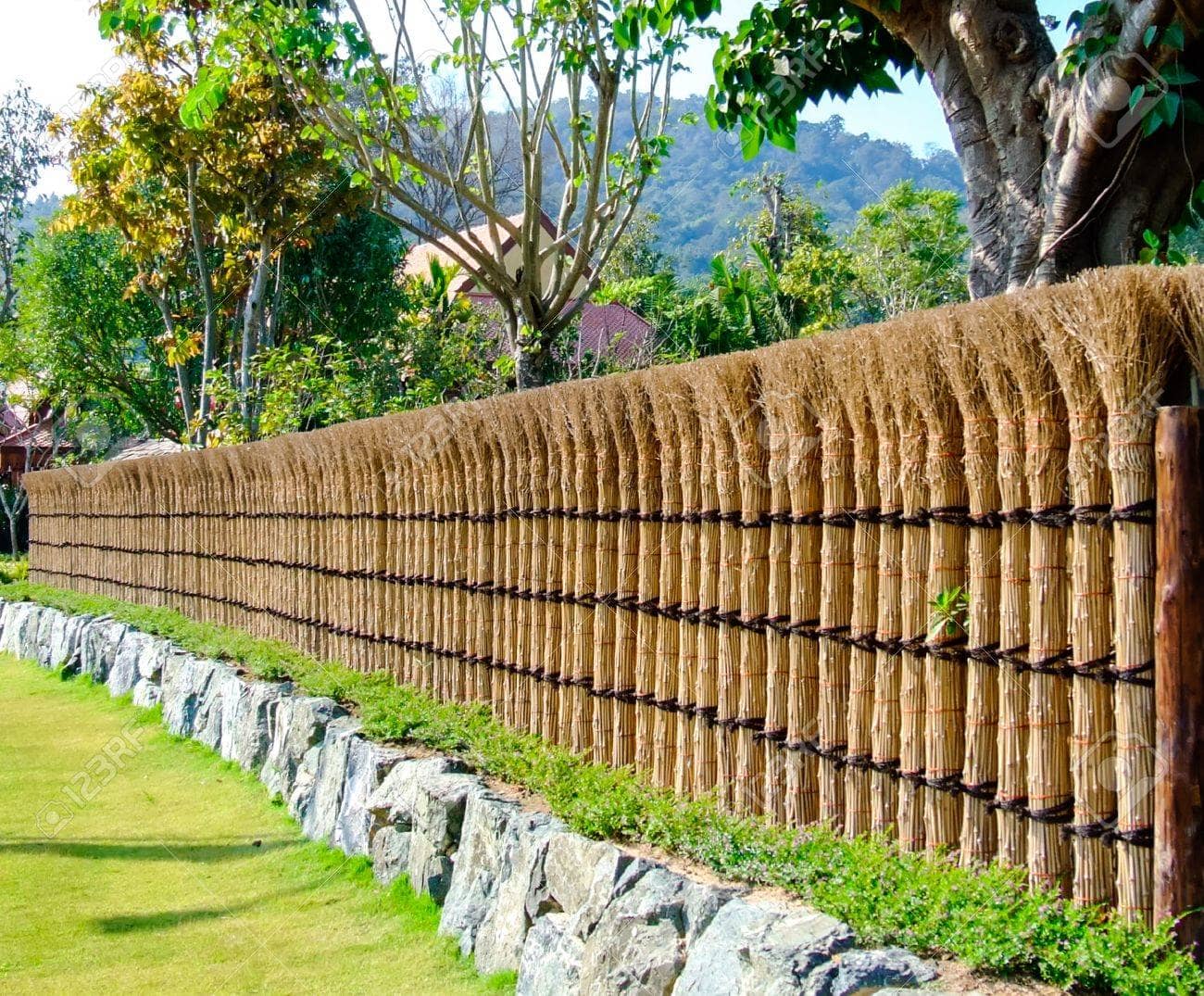
To embrace the traditional look of a Japanese garden, try investing in bamboo fence and entrance that can block view from outside. It will be better if you can grow the bamboo and arrange it as a living fence that adds inimitable style to your garden.
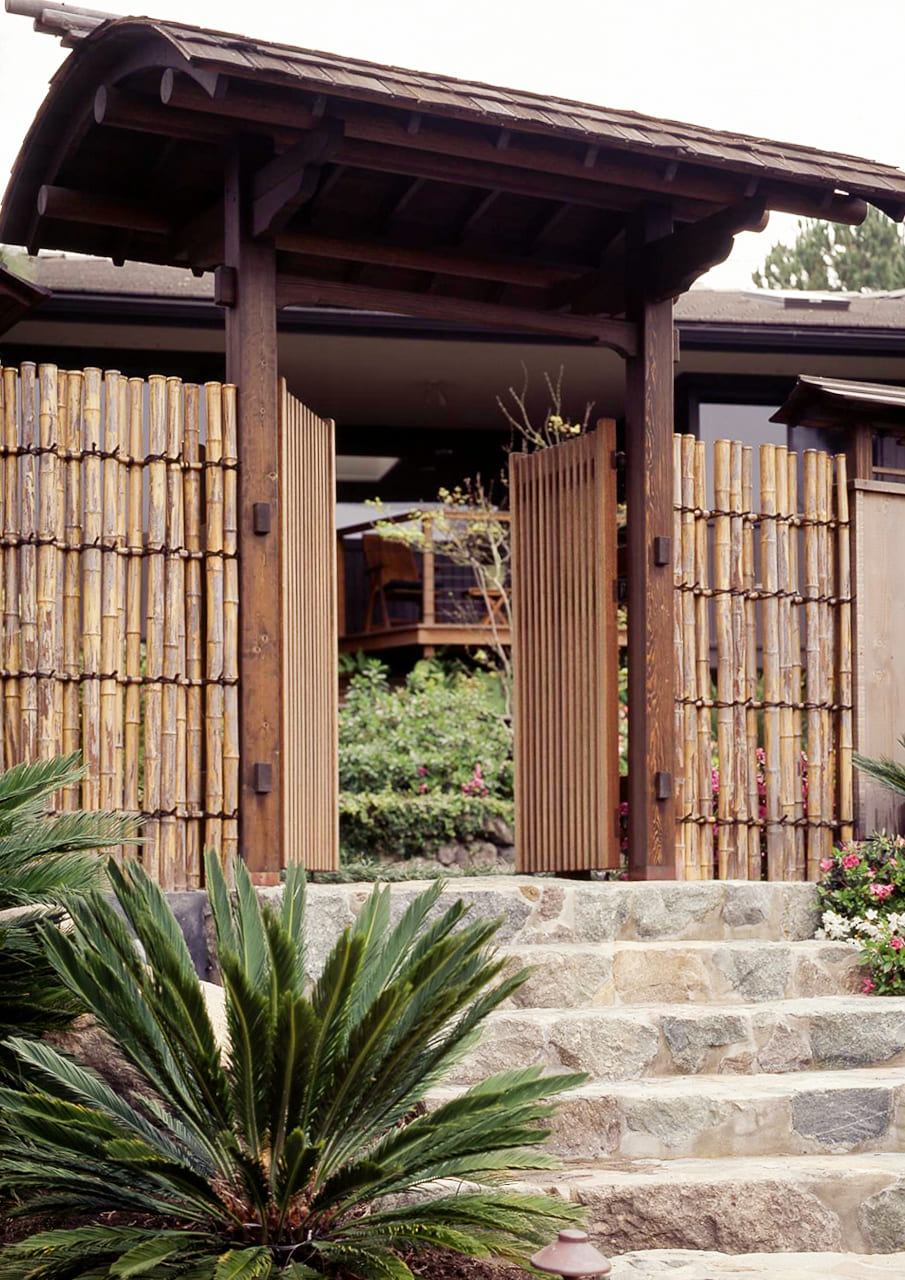
As you already know, the bamboo is a fast-growing plant. If you choose to grow it for your garden, choose the clumping type because it is less invasive than any other types.
6. Add a Bridge
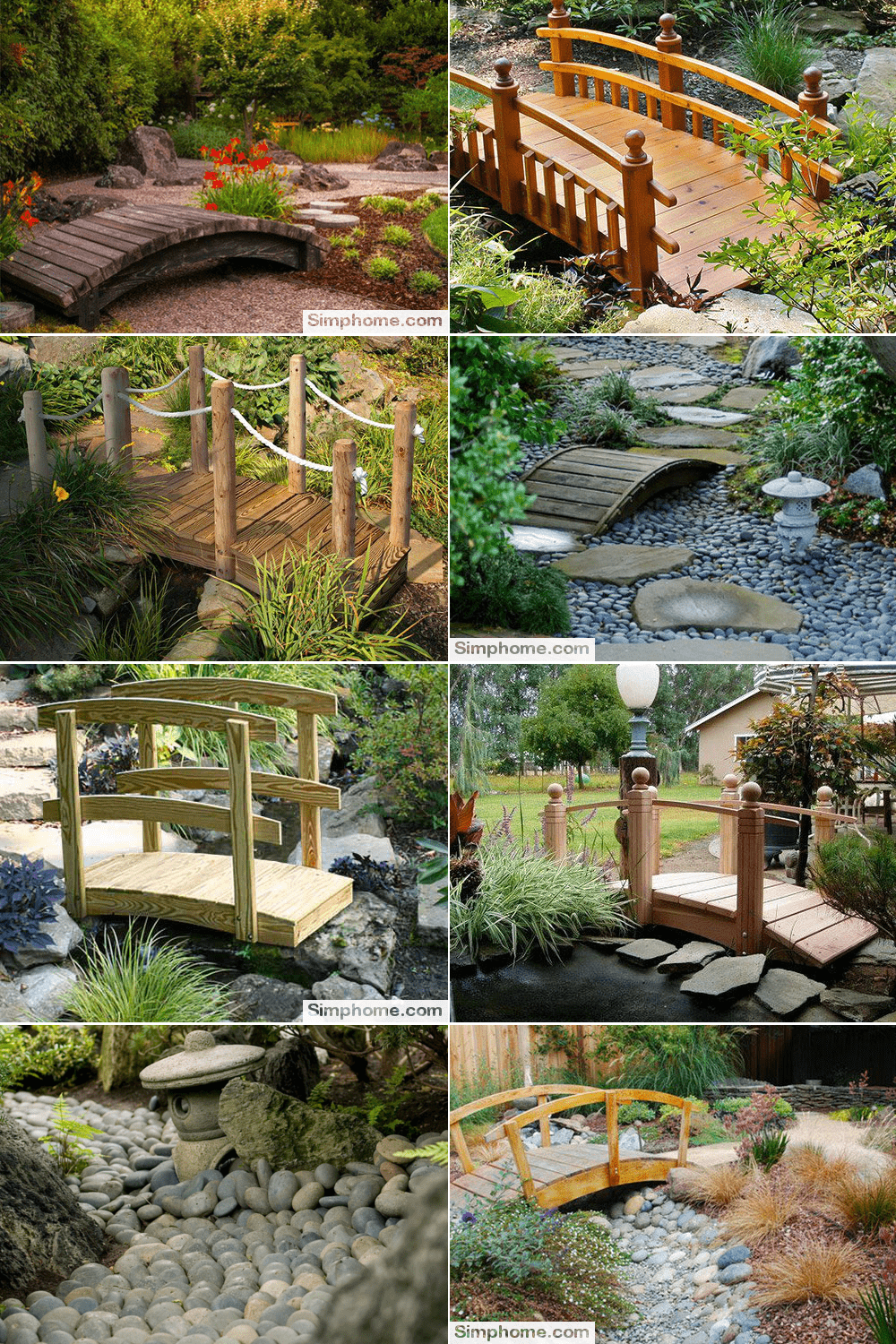
Bridge doesn’t have to be built across water – pond or stream. An artificial stream can represent water element in your garden and topping it with a bridge will add value into your garden too. It is an alluring aspect which makes you want to walk along the winding path and across the bridge.
Garden bridge can be made of various materials. But for a Japanese garden, wooden boards are the best. Garden kikuchi, for example, will make the garden look more authentic. It’s simple item to find, curvy, and looks well for both water and gravel.
5. Draw Some Lines
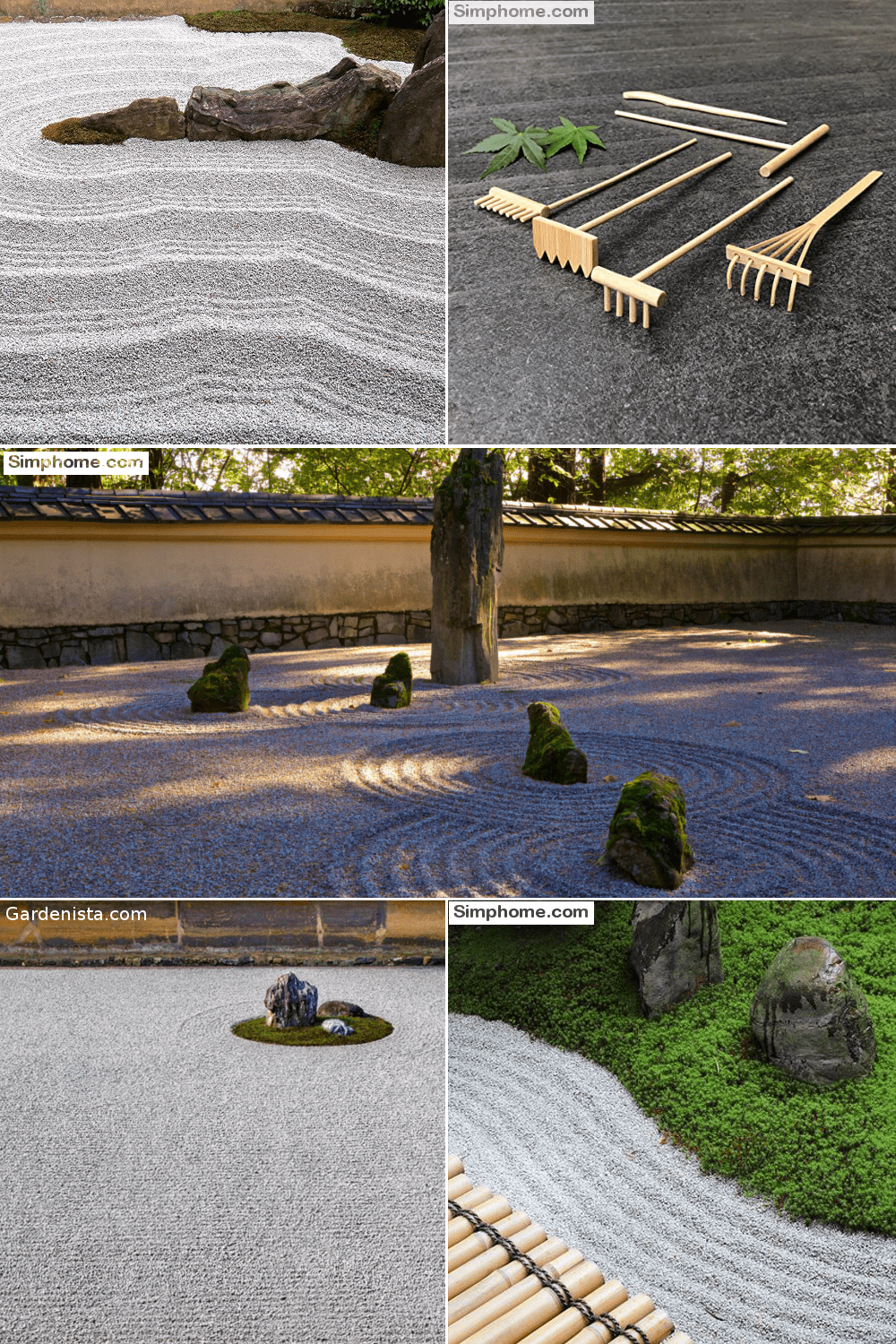
If you already have a garden but want to infuse Japanese look in it, you can choose to make raked sand or gravel. Just find a spot and clear it from unwanted plants. Arrange some rocks in the middle or whatever imagination you have. Next, spread sand or gravel on the empty spot around the rock. Use rake to make pattern on the sand – wave, circle, asymmetry. The idea is creating an empty space from plants that bring the feeling of balance and stillness.
The line pattern of the sand or gravel represents the ripple of waves around an island or mountain. The simple design offers some reflection or contemplation and once you finish the project, you can maintain it easily because you don’t have living plants to taking care of regular.
4. Prune the Tree Well
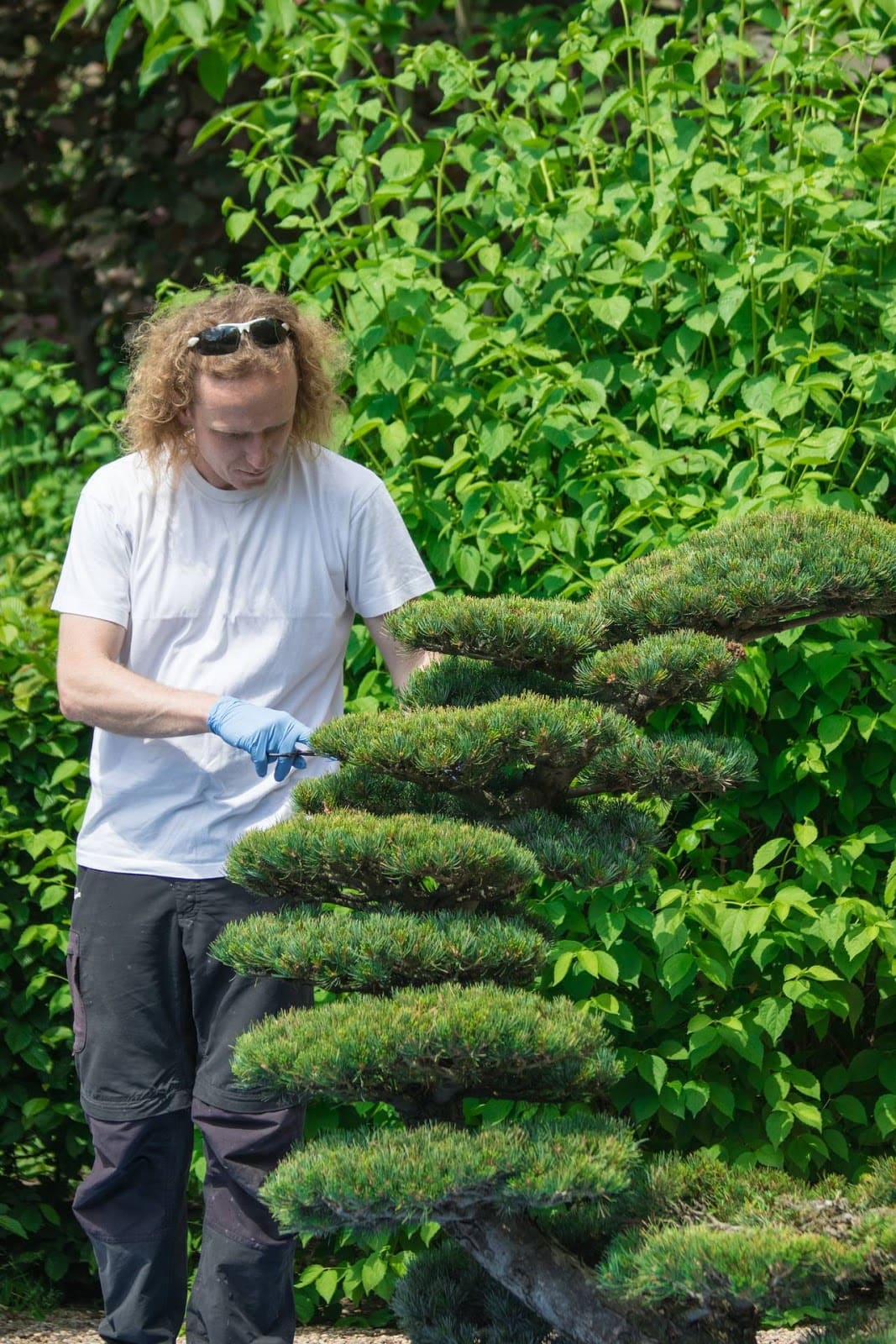
Niwaki or cloud tree is popular for Japanese garden due to its unique look. It is similarly treated as topiary tree, only their branches are pruned individually to form rounded shape like clouds.
The cloud trees should be put away from other big trees so that it can stand out in the garden. This kind of pruning work well with small leaved and compact foliaged tree, such as boxwood, yew, pine, Japanese privet, or camellia.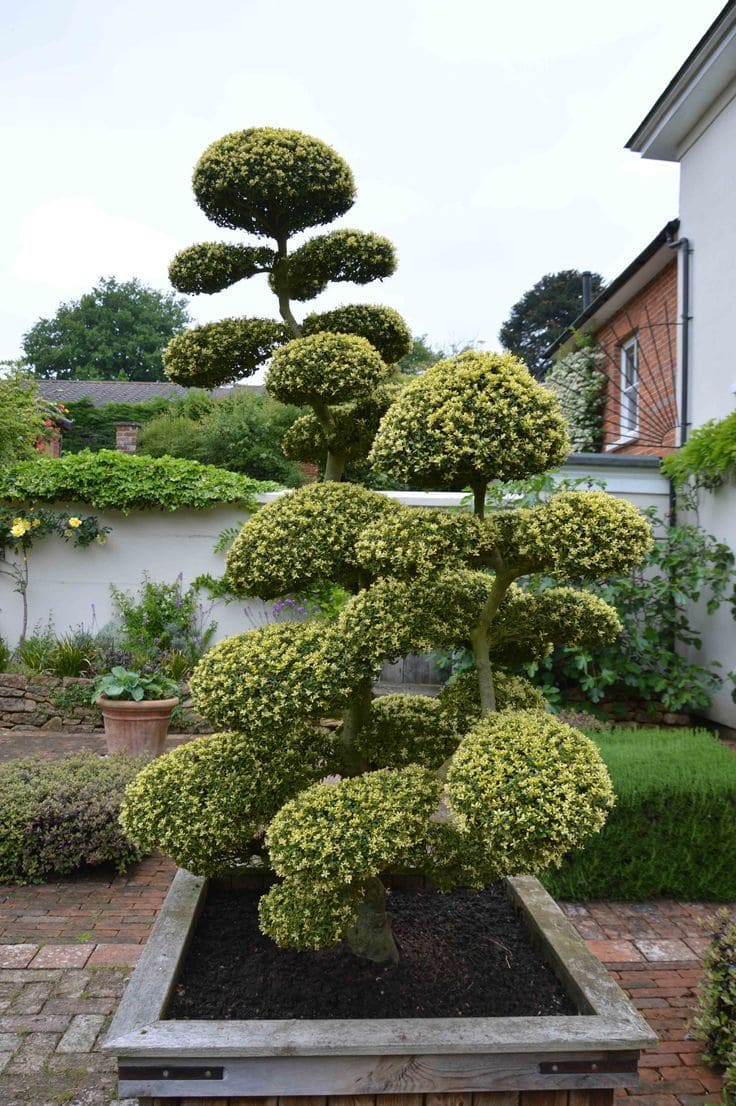
If you want to add niwaki to your garden, select a tree that has unusual branch formation for base design. Already trained trees are easy to shape but rather expensive while shaping your own tree can take time but entail low cost. You may need to shape the chosen branches by wiring or tying. Trim the tip to let more branches to grow to make cloud shape.
3. Cover It with Moss
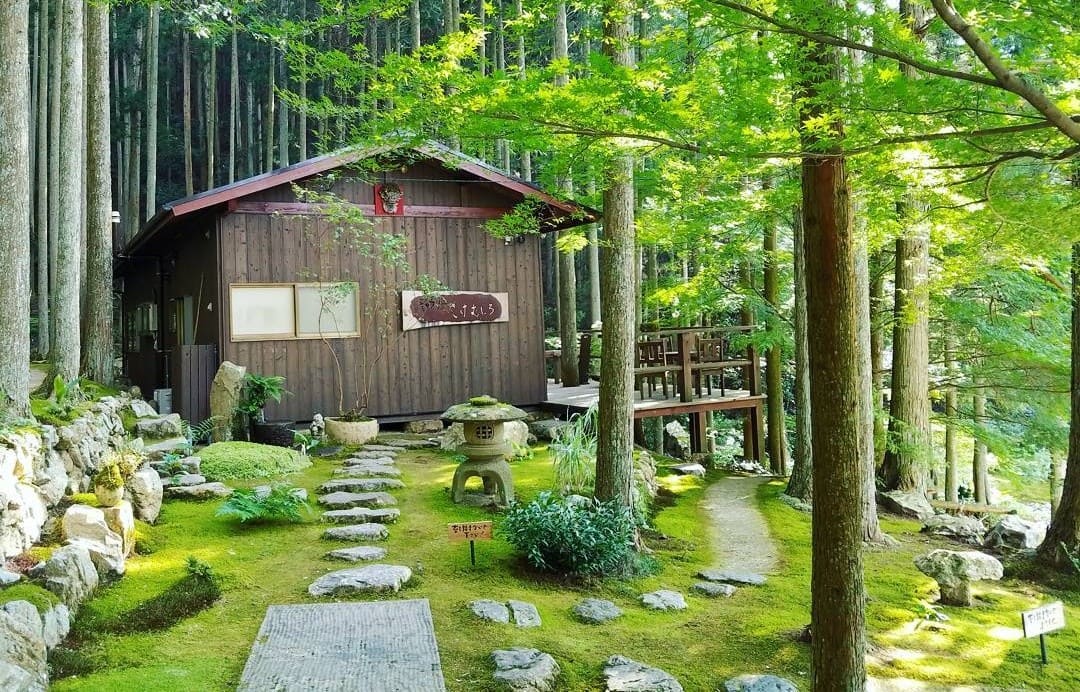
Contrast is essential in Japanese garden. So, using moss can give the contrast needed in subtle way.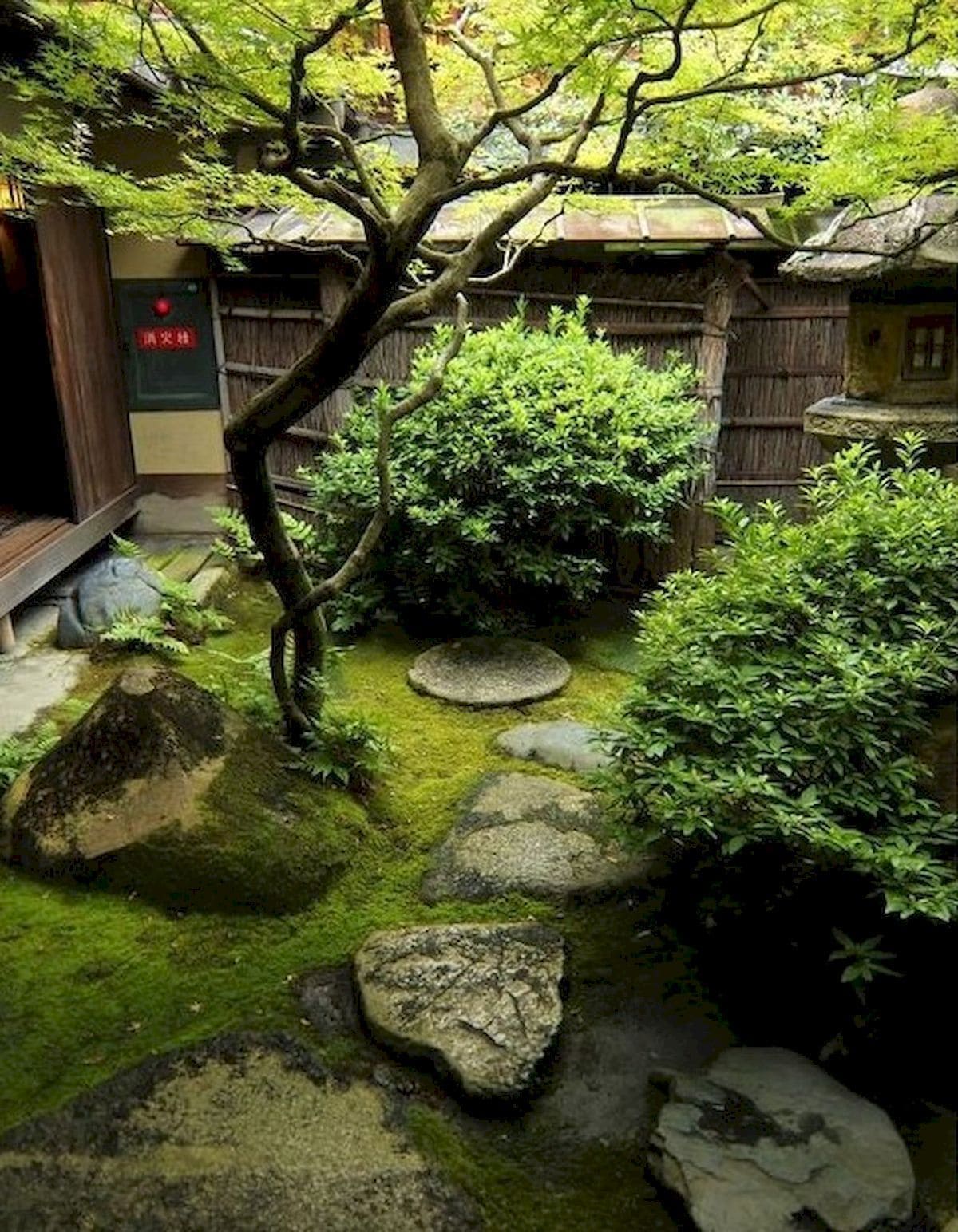
The moss can be spread in nooks and crannies to make the garden look green but not too crowded with plants.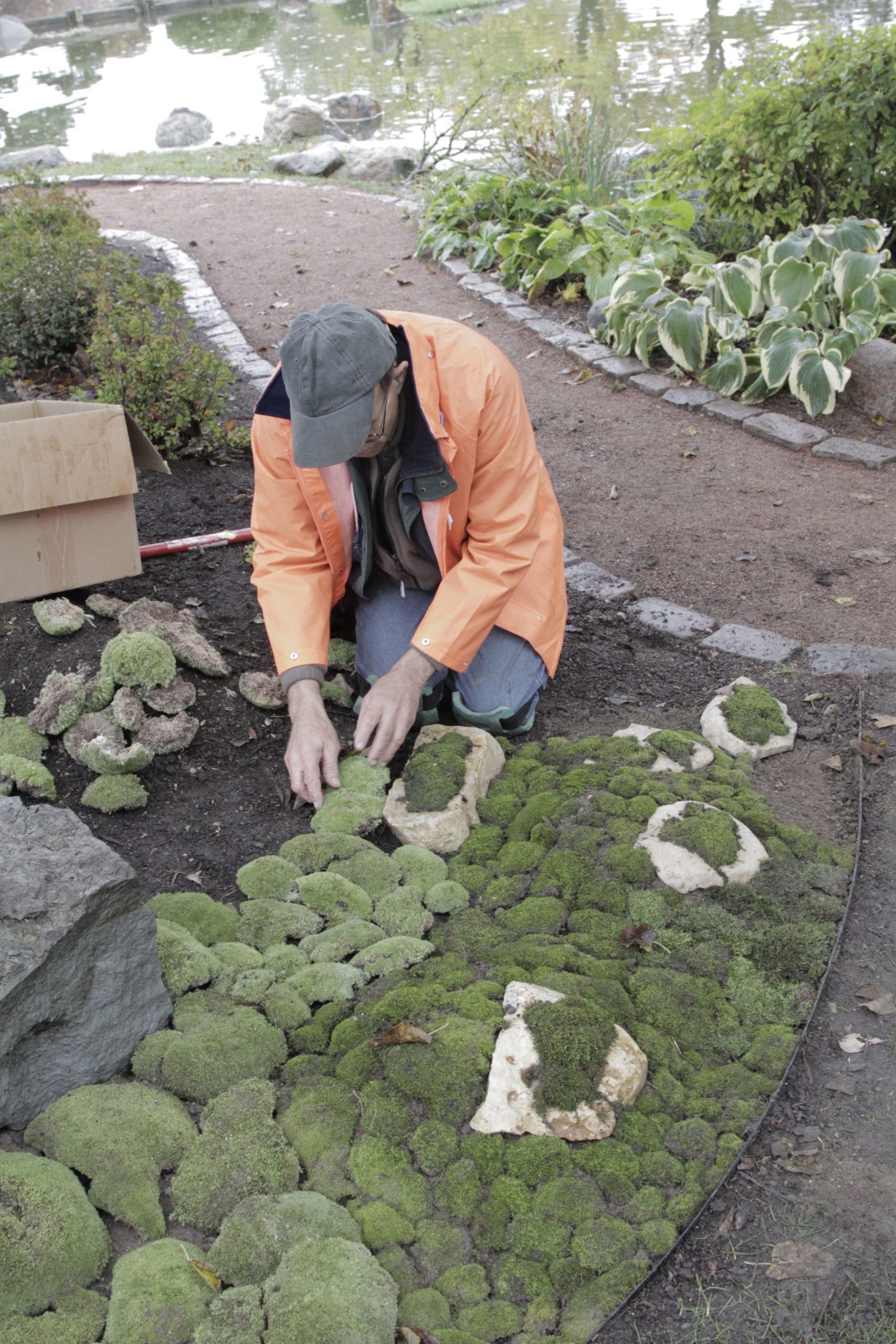
Though moss usually lives in humid climates, it doesn’t need a lot of water to flourish. Infact, moss can be incorporated to many garden conditions.
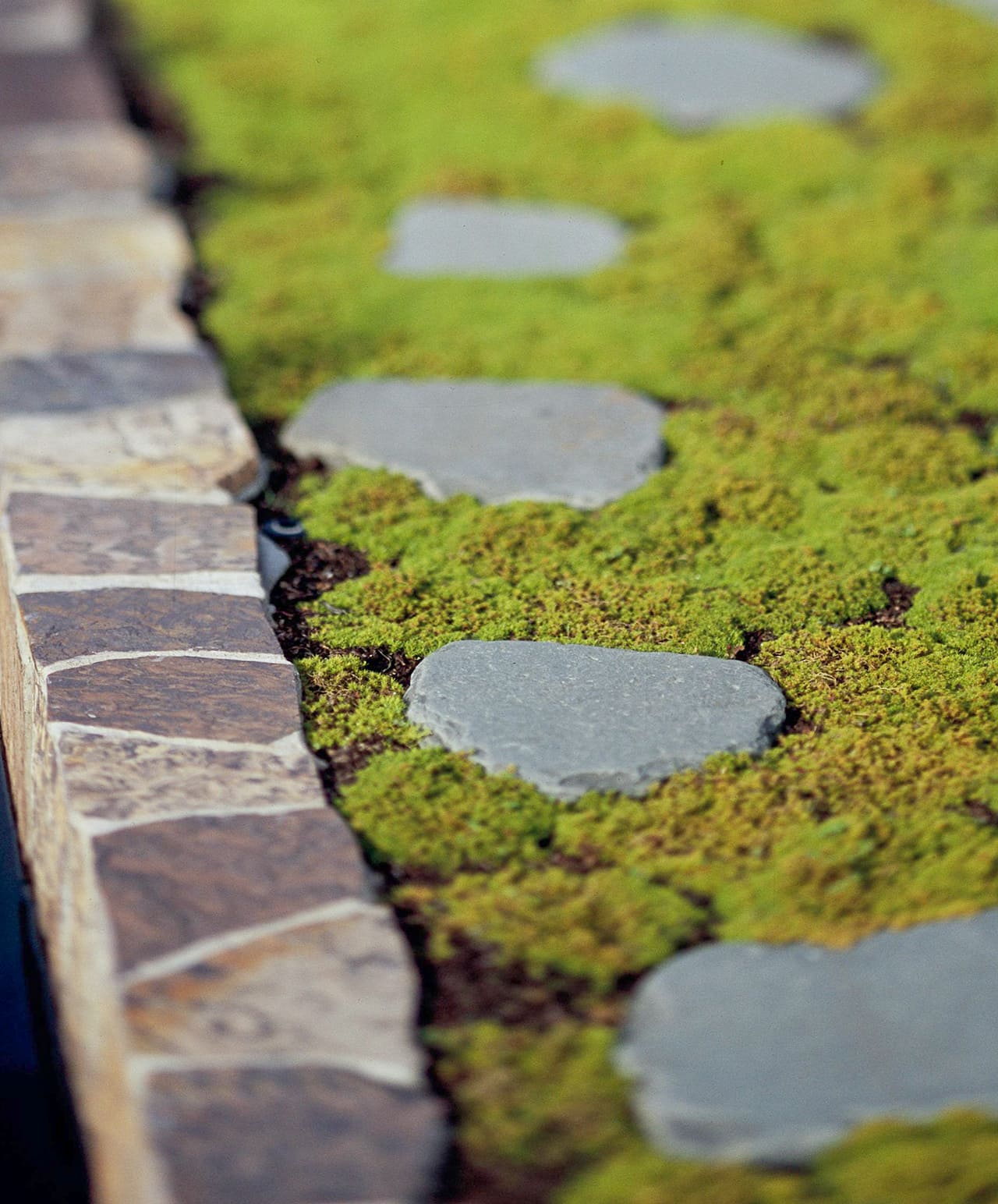
2. Let the Fish Swim

Japanese garden felt incomplete without fish ponds. The sound of water splashing, the rippling of surface, and the fish swimming inside create calming effect that many gardeners’ desires.
More than one people enjoy spiritual benefit simply by sitting down the edge of the pond and reflect important decision they made in their life.
Back to the idea,
Although koi is preferable for a Japanese pond, it is quite expensive to purchase and maintain. In that case, goldfish is a good alternative because it is cheaper and easy to maintain.
Proper care can make the goldfish live long. Here some tips to do it. Use adequate filtration system to eliminate any waste. Second, Use water plants to add shade and limit algae production. Use only goldfish food to feed them and do not overfeed. And last, top off the water to replenish the lost water during hot days.
Lastly number 1. Round out It with a Stone Lantern
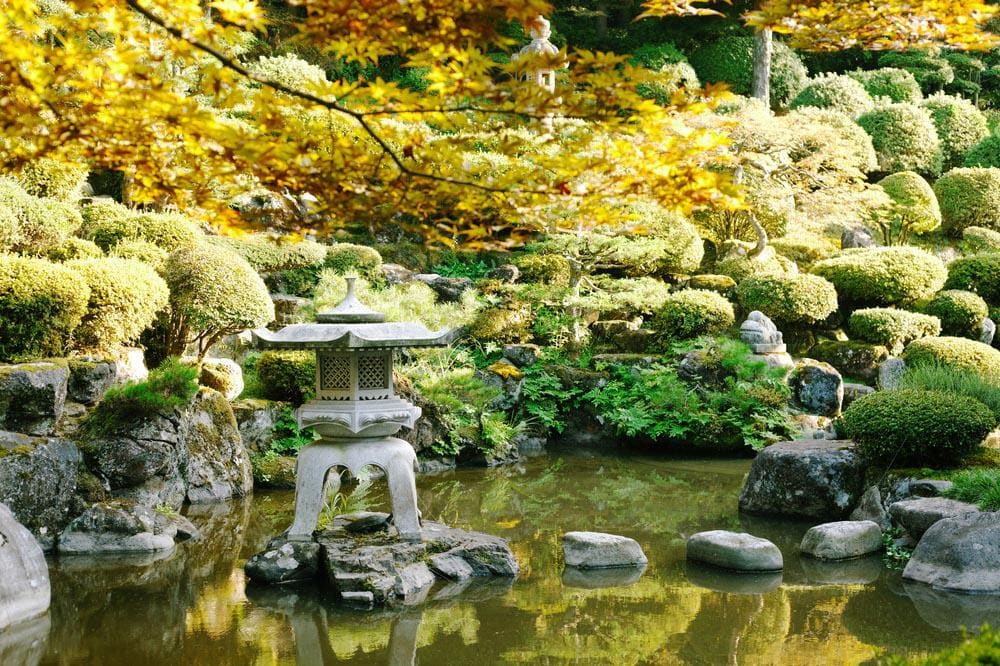
Plants, water, and rocks are essential elements in Japanese style garden. Followed by topiary plants that are placed artistically to create dimension and natural look just like what you see in the image.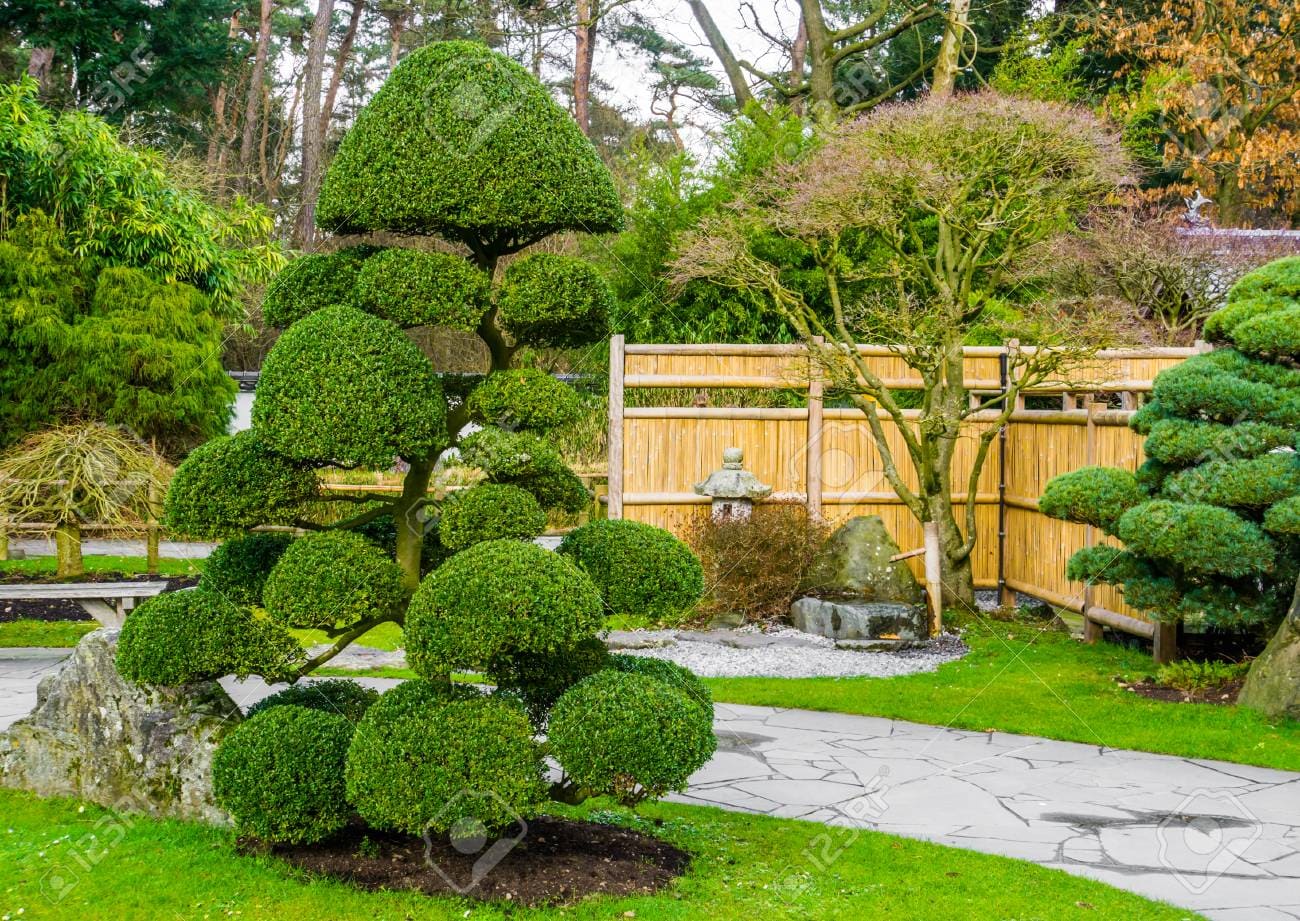
The garden contains yellow maple that brings color and warmth, while mossy stones around the still pond soften the change between plants and water. As a focal point, the designer took stepping stones that lead to a stone lantern that kicks the Japanese garden up a notch.
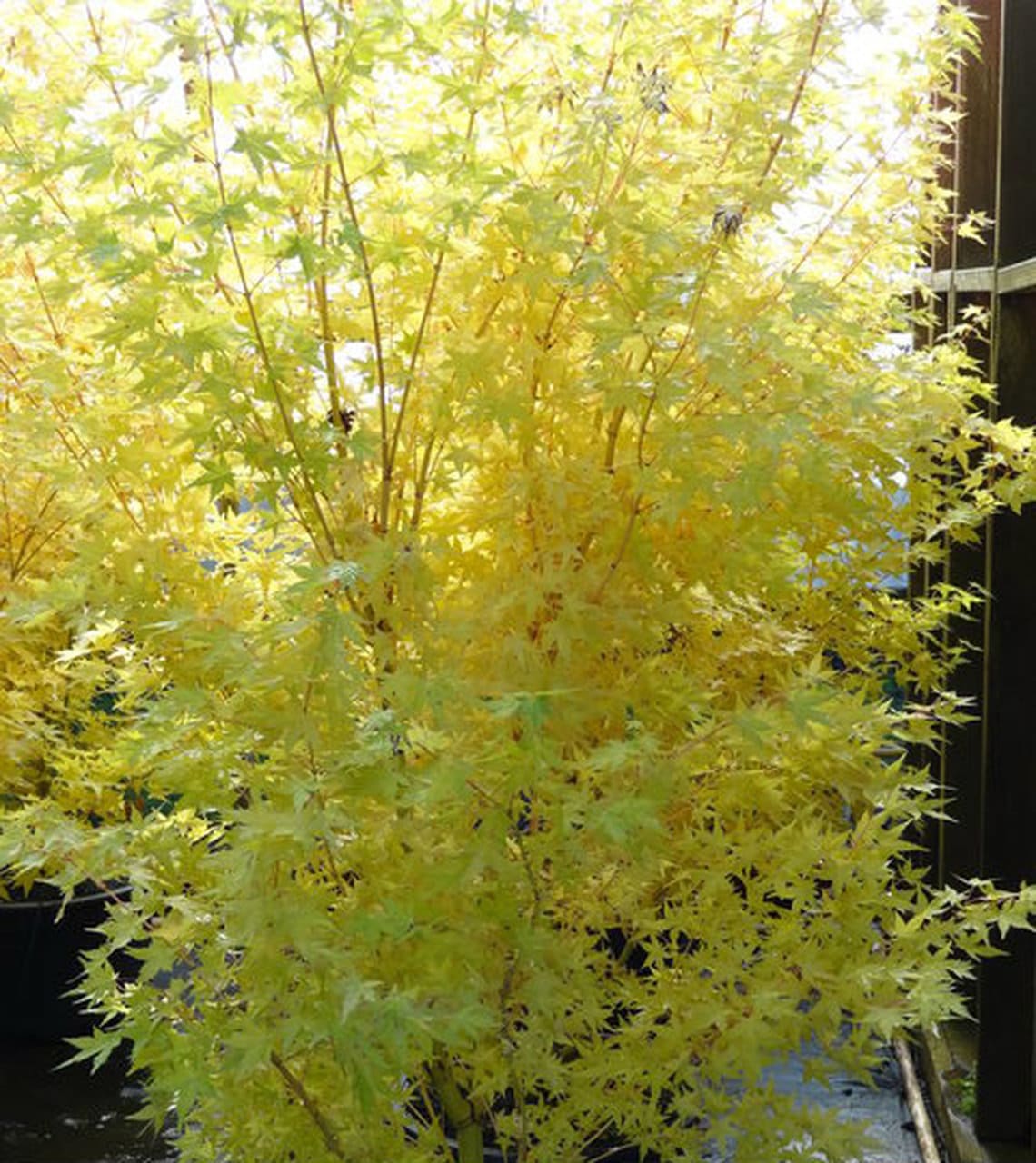
It is a common design of classic Japanese that comes with intricate detail that you probably never know until you visit link inside description.
Done,
So
Although look intricate,
It is quite easy to infuse Japanese style into your garden. Just bring simplicity into it, follow natural landscape to enhance the look of your garden, and choose the right plants. It doesn’t have to be expensive. Just remember the key elements, such as rocks, water, and plants. Work them together as simple as possible and see what happen.
References:
10. Edenproject, 9. Decoist | Homeguides sfgate, 8. Thespruce | Thetreecenter, 7. BHG, 6. Homedesignlover | BHG, 5. Gardenista, 4. Japanese-garden-design | RHS, 3. BHG, 2. BHG | Homeguides Sfgate, 1. Gardenloversclub Blog